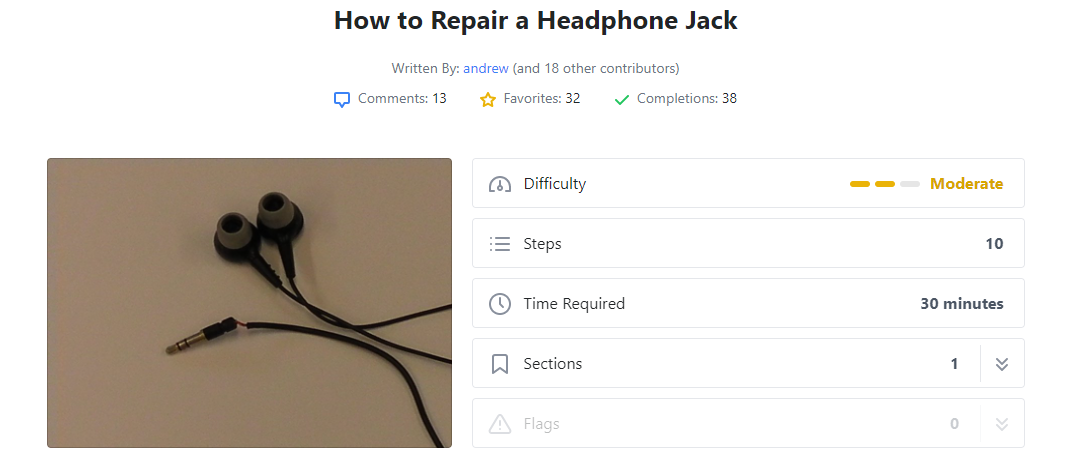Google’s New E-E-A-T Explained: How to Master the Update

In 2023, people want more and more content. That goes without saying. But they’re looking for specific types of content from sources they trust. Think about it. If you want to buy a new laptop, you’ll explore reliable sources like CNET, The Verge, PC Mag, Forbes, Tech Radar, Laptop Mag, Wired, and the like.
Why?
Because they demonstrate E-E-A-T: Experience, Expertise, Authoritativeness, and Trustworthiness, Google isn’t chockfull of random content strewn around; everything is neatly and strategically ranked based on the value it provides to readers.
E-E-A-T is the latest metric that helps Google demarcate between good content and bad content.
If your content fails to demonstrate Experience, Expertise, Authoritativeness, and Trustworthiness, web users will head toward the nearest exit. Google will also pick up on the lack of quality and relegate your content to lower SERP ranks.
How can you prevent this from happening? It’s pretty simple. By optimizing your content for E-E-A-T the right way.
In this blog, we’ll offer a closer look at the latest Google E-E-A-T update and help you weave it into your SEO plan. What exactly is it, why does it matter so much, and how can you optimize your content for it? Tag along, we’re breaking everything down!
Google E-E-A-T Update: The Basics
You may be familiar with Google E-A-T: Expertise, Authoritativeness, and Trustworthiness. Launched in 2014 as part of Google’s Search Quality Guidelines, E-A-T is a critical guideline that helps Google assess the quality of web content.
Fast forward to 2023, and E-A-T isn’t exactly on anyone’s radar anymore; it has been replaced with E-E-A-T. The added E for Experience helps Google understand whether your web content is written by an experienced professional. Why is this important? Let’s break it down.

When inexperienced content creators tackle a subject they know nothing about, the content is low in quality and relevance. By introducing an E for Experience, Google wants to let content creators know that content must be created by professionals who know what they’re writing about.
If you’re creating food content, make sure you’ve tried the recipe before. If you’re sharing HVAC repair tips, make sure you’ve repaired an HVAC system before. If you’re working on an infographic that covers the top laptops of 2023, make sure you’ve tried them before.
Google is a genius for introducing this metric. It helps them give users high-quality content written by experienced industry professionals, not layperson content creators who know next to nothing about the topic at hand.
No matter how much research is done, an inexperienced person cannot provide the same value as an experienced professional. When Experience is prioritized with Expertise, Authority, and Trust, the overall quality of content goes up. This results in a smoother web experience for users and loftier rankings for businesses.
Is Google E-E-A-T a Ranking Factor?
No, and it’s very important for businesses to understand this. E-E-A-T is not a direct ranking factor. However, since it’s a part of Google’s Quality Rater Guidelines, it still plays a vital role in determining your rankings.
So while Googlebot isn’t scanning your content for E-E-A-T, Google’s highly trained human raters are tackling this critical task. This is a team of thousands of people. While algorithms are useful, they cannot read between the lines and truly grasp the subjective quality of content. Google’s human raters do this meticulously. The results help determine your rankings.
This piece of information is essential because you cannot simply optimize your website for E-E-A-T and call it a day. Make sure you keep Google’s official ranking factors in mind as well.
How Can I Master the E-E-A-T Update?
1. Write Content with the Intention of Helping People
Content creators get so caught up in the hoo-ha of the Googleverse that they often forget the purpose of creating content: helping people out. If you rework your website with the intention of striking a chord with Google’s human raters, your plans will fall flat on their face.
Instead, return to the basics and start creating content that helps people. In doing so, you’ll automatically end up checking E-E-A-T off the list. The more helpful your content, the more it will satisfy Google’s E-E-A-T criteria. Let’s consider an example. If you’re writing a blog on travel packing hacks, focus on providing the most useful information to your audience possible.
Now, you cannot do this by simply making up hacks on the spot and assuming they’ll pan out well in reality. While something may sound good on paper, it won’t necessarily turn out as expected in practice.
The last thing you want to do is share hacks that end up disappointing people. To prevent this and, as discussed earlier, provide the best value possible, you’ll have to try the hacks out for yourself. As you do this, you’ll check E-E-A-T’s first requirement off the list: Experience.
To maintain high value, we also recommend ensuring you’re qualified to tackle this topic.
- Do you work in the travel industry?
- Do you personally design, manufacture, or oversee the production of suitcases?
- Are you familiar with optimal packing techniques and ergonomic suitcase usage?
Take some time to answer these questions as honestly as possible. If you’re not fit to write high-level content yourself, hire experts who can do the task justice and help your audience, not mislead them. Think of it this way. If you have a toothache, would you visit a cardiologist? Nope, you’d visit the best dentist you could find in your area.
Why?
Because they have Experience, Expertise, Authoritativeness, and your Trust.
Web users use the same thought process when consuming online content. Value-added content always wins and meets the E-E-A-T criteria by default. Prioritize content quality, and you’ll go a long way.
Here’s an excellent example of how to provide value to web users. iFixit’s How to Repair a Headphone Jack guide begins with a brief overview of the DIY activity.

This is brilliant. The difficulty score and time breakdown make it pretty obvious that this DIY has been tried before. As you keep reading the guide, you’ll notice certain warnings that make it even more apparent that this isn’t child’s play; the guide has been put together by experienced experts with credibility.

Adding these little touches to content is an excellent way to increase its E-E-A-T.
You don’t have to use this strategy as it is. Depending on your audience, industry, market, and the topic at hand, inject more thought, value, and expertise into the content until you’re confident that it gives web users exactly what they want.
In this case, the guide is comprehensive to a tee. The bullet-style instructions are carefully laid out with supplementary pictures. If you look closer, you’ll also notice that the blog includes a What You Need section.

Collectively, these efforts help users recreate the activity with the utmost ease and convenience.
Whether you’re creating a video on the top Facebook advertising trends of 2023 or writing an article on how to fight your DWI charges in Texas, keep your intention simple and straightforward.
By the end of the content, your audience should have all their questions answered and no further queries. This is the kind of content Google wants. And this is exactly the kind of content that satisfies E-E-A-T.
We recommend A/B testing your content with a small group from your target audience. Which content do they gravitate towards? And which content informs them without leaving any room for confusion?
Once you have your answer, you’ll develop a better understanding of why a certain type of content was given precedence over the other. Keep the difference in mind.
2. Hand Over Content Tasks to Industry Experts
We get it. At some point or the other, you may feel tempted to hand over critical content projects to your in-house team. While this sounds like a great way to get rid of additional costs and secure your bottom line, it’ll damage the overall E-E-A-T potential of your content.
In 2023, content should only be created by industry experts. This doesn’t mean you have to hire content creators from your industry and rack up a hefty bill. Instead, turn to a content marketing agency that boasts a team of experienced content creators (e.g., writers) for each industry.
These are trained professionals who specialize in different industries and possess exceptional content-creation skills. It’s like feeding two birds with one scone. As you outsource your SEO content to the crème de la crème of content creators with the required specialization, the difference will show in your content.
3. Add Testimonials to Your Content
According to a recent survey by PowerReviews, over 99.9% of web users read reviews when they shop online. You may want to read this again until the sheer power of reviews and ratings hits you.
Online reviews aren’t just helpful; they’re transformative. If a product doesn’t appear all that great online, but it boasts excellent reviews, web users will consider buying it. The significance of online reviews cannot be undermined, especially in 2023, when people trust web users more than brands.
If a brand compliments its own product, they’re just trying to make a profit. But if a web user leaves an organic review, the product/service has been tried and tested. Web users are getting smarter and smarter. It’s becoming easier for them to demarcate between paid reviews and organic reviews.
If you want your content to demonstrate Authoritativeness and Trustworthiness, sneak verified user reviews into your content. Start with web content. Your landing pages should feature a handful of verified reviews. Evernote does this brilliantly.

This is a great way for Google’s human raters to understand that your content meets the mark. If it’s trusted by people, that’s great. But if it’s trusted by high-DA companies like Forbes, Inc., The Verge, and so on, your content sits on the royal throne of Authoritativeness and Trustworthiness.
Use the same recipe for regular content (articles, blogs, guest posts, infographics, videos, etc.). Make sure you display 2–3 brief reviews towards the end.
The more specific the reviews, the better. If you run an interior design agency and write a blog on the top kitchen design trends for 2023, add reviews from clients who raved about your kitchen design services.
Reviews should come right after the call-to-action (CTA). Avoid stuffing them unnecessarily. If they don’t go with the flow of the content, skip them altogether. Remember, you’re trying to help your audience, not force a sale.
4. Link to High-DA Sources
If you want to launch power-packed content that demonstratives Expertise, Authoritativeness, and Trust, supplement it with official statistics, research, studies, and other types of data.
We know, we know.
This is easier said than done.
If you run a small business, you can’t waste a ton of your revenue on qualitative and quantitative market research. Primary research is expensive. While every business would love to walk home with a long list of fresh statistics, the process alone could force them into bankruptcy.
Since this option is off the table, take the fastest and safest shortcut in sight. Start linking to credible studies, research papers, and statistics. You can also add tweets by industry experts to your content. Explore academic databases and official publications to find data that supplements your content. This little trick will increase the E-E-A-T of your content and help you build backlinks. When you send link juice to a high-DA company, they’ll become aware of your presence.
How?
Most high-level companies use software that fetches a list of all the backlinks they’ve generated recently. This information is vital. It sets the stage for potential link building partnerships and brand collaborations.
When a high-DA platform notices your backlink and enjoys what your brand offers, they may reach out with an opportunity or respond to an email you may have dropped them. Link building will benefit your business in numerous ways. The best part? Backlinks are one of Google’s strongest ranking factors.
In this case, you’re handing out a backlink, not receiving one. However, this strategy opens the door for backlink reception, which should be one of your biggest content marketing goals. You can’t go wrong with this.
Recommended Read: How to Find Link Building Opportunities
5. Start a Conversation
Every type of content has a comments section at the end. YouTube videos have it. Blogs and articles have it. Infographics have it. Even press releases have it! Many businesses make the mistake of leaving these barren. If you want web users and Google’s human raters to trust your content, spark an insightful conversation in the comments section.
When people read the commentary, especially the insight your experts have to offer, they’ll trust the content more. The outcome? High E-E-A-T. This approach also brings new perspectives to the table. As you answer people’s follow-up questions, the conversation will be steered into exciting new directions that further reveal your expertise.
If you’re not ready to take charge in the comments section yet, hire experts who can handle the task for you. By sparking thought-provoking conversations, you’ll build a wide audience and show Google’s human raters that your insight is a cut above the rest.
Search Berg Has Set the Table, It’s Time to E-E-A-T!

Experience, Expertise, Authoritativeness, and Trustworthiness are on the menu for today.
Are you ready to E-E-A-T?
Our SEO chefs have set the table, and they’re ready to serve you!
At Search Berg, we specialize in crafting E-E-A-T-friendly SEO campaigns that help up-and-coming businesses rank higher on Google SERPs, build credibility and trustworthiness, earn more conversions, and secure their bottom line. If your SEO performance hasn’t been up to par, chances are you’re using outdated online marketing strategies that have lost their efficacy over time.
The SEO landscape is changing dramatically on a regular basis. When you keep up with the latest Google guidelines for SEO, like Google E-E-A-T, you’ll manage to optimize your content the right way.
The outcome? Higher rankings, a steady inflow of traffic, and more revenue in your pocket. Explore our E-E-A-T SEO services to get started. We’ll craft a personalized SEO plan that helps you get ahead and stay ahead.
We’re ready when you are!












